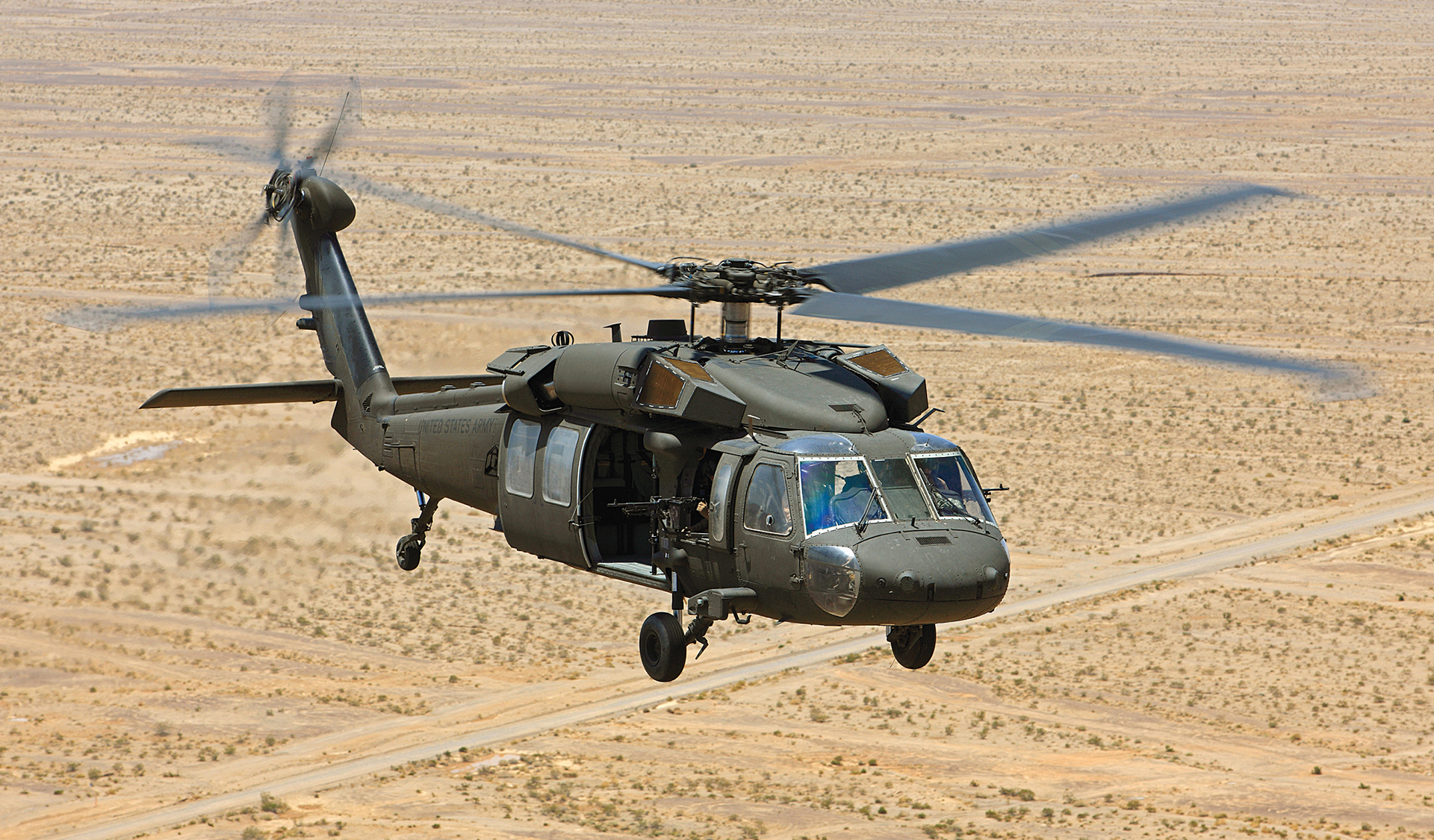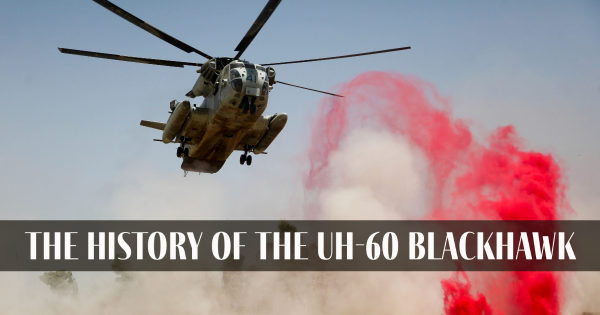Understanding the Mechanics and Engineering Behind Uh 60 Helicopters
The UH-60 helicopter, commonly referred to as the Black Hawk, stands as a peak of modern rotorcraft innovation, personifying a blend of robust design and detailed mechanics. From its creation to its present models, the evolution of this aircraft showcases a combination of advancement and functionality. As we peel off back the layers of the UH-60's layout, a globe of intricate systems and precise design emerges. Recognizing the mechanics and engineering behind this functional airplane introduces a realm where precision fulfills power, and where each element plays a crucial duty in achieving flight.
Background of UH-60 Helicopters
The background of UH-60 helicopters traces back to the late 1970s when the USA Military sought a advanced and versatile energy helicopter to change its aging fleet. In reaction to this demand, the Sikorsky Airplane Company developed the UH-60 Black Hawk helicopter. Presented in 1979, the UH-60 swiftly ended up being a staple in military procedures because of its outstanding capabilities.
The UH-60 was made to master a range of missions, consisting of army transport, medical evacuation, digital war, and unique operations. Its ability to adjust to various functions made it a useful property to the united state Army and other military pressures around the globe
Over the years, the UH-60 system has actually undertaken numerous upgrades and variants to boost its efficiency and equal advancing goal needs. These helicopters have actually seen considerable solution in problems such as the Gulf War, Afghanistan, and Iraq, showcasing their reliability and adaptability in varied operational settings. The UH-60's rich history is a testament to its enduring legacy as a premier energy helicopter.

Engine and Power Solutions
Utilizing advanced propulsion innovation, UH-60 helicopters are furnished with sophisticated engine and power systems to make sure ideal performance and reliability in a variety of functional situations. The UH-60, commonly referred to as the Black Hawk, is powered by two General Electric T700-GE-701D engines, each efficient in supplying up to 1,940 shaft horse power. These turboshaft engines offer the necessary drive for the helicopter to perform its missions efficiently, consisting of army transport, clinical emptying, and combat assistance.

Blades System and Aerodynamics
How do the blades system and the rules of aerodynamics of UH-60 helicopters add to their operational efficiency and trip abilities? The blades system of the UH-60 helicopter plays a critical function in supplying lift and propulsion.
The rules of aerodynamics likewise play an essential role in the performance of UH-60 helicopters. The structured fuselage and blades blade style decrease drag, allowing visit this site right here the helicopter to attain higher rates and much better fuel performance. The aerodynamic layout of the UH-60 likewise contributes to its capacity to operate in varied environmental conditions, consisting of high altitudes and warm temperature levels.
Avionics and Trip Control Solution

In its complex coordination with the rotor system and the rules of aerodynamics of UH-60 helicopters, the avionics and flight control systems develop a crucial network of innovations forming the aircraft's functional capabilities. Avionics include the digital systems utilized for interaction, navigation, and checking various airplane functions. In the UH-60, these systems include electronic displays, communication radios, general practitioner navigating, weather radar, and auto-pilot systems. These avionics systems give vital information to the pilots, improving situational awareness and making sure effective and secure operation of the helicopter.
The trip control systems of the UH-60 are accountable for translating the pilot's inputs into the proper changes to the blades system, ensuring stable flight and maneuverability. These systems consist of hydraulic actuators, servos, and computers that collaborate to manage the main and tail blades, as well as various other trip control surface areas. By specifically handling the helicopter's trip characteristics, these systems make it possible for pilots to execute a vast array of goals, from transportation and search-and-rescue to battle procedures, with accuracy and self-confidence.
Function and Applications in Air Travel
The function and applications of avionics and flight control systems in aviation are essential to making sure the effective and risk-free operation of aircraft, including UH-60 helicopters. Avionics systems in UH-60 helicopters include a variety of electronic systems that help in navigating, interaction, monitoring, and controlling various airplane features. These systems consist of electronic display screens, auto-pilot systems, interaction radios, GPS navigation equipment, and weather condition radar. Flight control systems play an important function in navigating the helicopter in the air, preserving stability, and guaranteeing exact activities. The fly-by-wire modern technology made use of in modern-day UH-60 helicopters converts pilot inputs right into digital signals, which are then translated by the flight control computers to adjust the aircraft's control surface areas. In addition, these systems incorporate safety and security functions such as autopilot settings, terrain awareness warning systems, and security augmentation systems to enhance the total security and operational abilities of the Continue UH-60 helicopters in various goals, consisting of army transport, medical evacuation, search and rescue, and airborne firefighting.
Conclusion
In conclusion, the UH-60 helicopter is a flexible aircraft with an abundant background and advanced engineering. Its engine and power systems, blades system, aerodynamics, avionics, and trip control systems all collaborate to make it a efficient and trusted device. The UH-60's duty and applications in aviation are huge, ranging from armed forces procedures to browse and save objectives. Its proceeded development and use show its importance in the area of aeronautics (uh 60).
In its intricate coordination with the blades system and the rules of aerodynamics of UH-60 helicopters, the avionics and trip control systems develop a crucial network see this of technologies forming the airplane's operational capacities.The trip control systems of the UH-60 are accountable for converting the pilot's inputs into the proper changes to the blades system, making certain secure trip and ability to move. Avionics systems in UH-60 helicopters incorporate a variety of electronic systems that help in navigating, communication, monitoring, and regulating different aircraft features. Furthermore, these systems include security features such as autopilot settings, terrain understanding warning systems, and security augmentation systems to enhance the overall security and operational abilities of the UH-60 helicopters in various objectives, including troop transportation, medical evacuation, search and rescue, and airborne firefighting.
Its engine and power systems, rotor system, the rules of aerodynamics, avionics, and flight control systems all function together to make it a reputable and efficient device.
Comments on “Professional Insights: Enhancing Efficiency in UH 60 Helicopter Procedures”